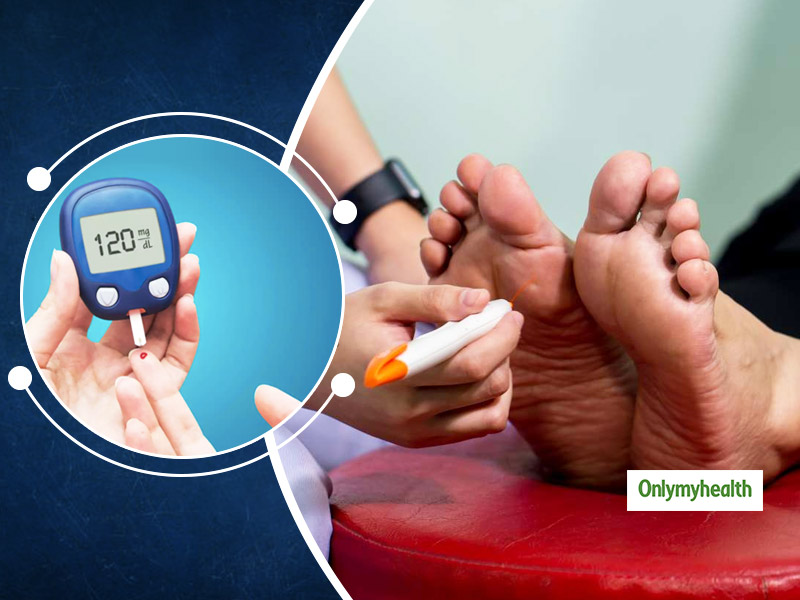
Diabetes is a chronic disease that not only causes fluctuations in blood sugar but also hosts other illnesses. When the blood sugar levels become higher, the risk of nerve damage increases. Over time, increased levels damage the nerves and lead to diabetic nerve damage which is also called diabetic neuropathy. Diagnosing the early signs of this condition can help in preventing its severe consequences. Numbness, tingling hands & feet, pain, etc. are noticeable signs of diabetic nerve. If you are diabetic and experience any of these, consult a doctor immediately before it develops into a life-threatening condition.
Table of Content:-

Also Read: Are Diabetes and Stress Related To Each Other? Know From Expert
Symptoms of Diabetic Nerve Damage
Usually, the initial symptoms of diabetic neuropathy occur first in the feet and then develop gradually to other parts. You would feel like someone is poking your feet with pins and needles. Here are other common symptoms of diabetic nerve damage:
- Loss of sense of touch
- Touch sensitivity
- Numbness
- Tingling sensations
- Unable to walk in coordination
- Burning sensation and pain
- Weakening of muscles
- Indigestion, vomiting and nausea
- Feel dizzy when standing up
- Increased or decreased sweating
- Problem in urinating
- Increased heart rate
Types of Diabetic Nerve Damage
There are four types of diabetic neuropathy.
1# Peripheral neuropathy: This is the most common type where diabetic nerve damage occurs in feet and legs. In some cases, it may happen in hands also. The symptoms often trouble at night. In this case, you may not be able to feel any sore or injury in the foot due to nerve damage.
2# Autonomic neuropathy: Parts of the body that are not consciously controlled get affected by autonomic neuropathy. This happens in muscles and organs such as cardiovascular organs, digestive tract, sweat glands, bladder, etc. The symptoms and problems occur depending upon the affected area. The problems include mild to severe which may even cause a heart attack.
3# Proximal neuropathy: Also known as diabetic amyotrophy, this is a rare type that mostly occurs in diabetic men aged above 50 years. Diabetic nerve damage in thighs, hips or buttocks comes in this category. This is rare and has a better recovery rate as compared to others.
4# Focal neuropathy or mononeuropathy: As the name suggests, this occurs when a single nerve is damaged. This is sudden damage that makes the affected area weak and painful. Carpal tunnel syndrome is a common example.
Also Read: 6 Things You Need To Know If You Take Insulin Injections
How is diabetic nerve damage managed?
Sadly, there is no treatment for diabetic neuropathy available as of now. The only possible solution is to prevent it from occurring. Controlling blood sugar levels is the best possible prevention method. Other ways to manage this condition are:
- Medications: Since diabetic nerve damage causes a lot of pain(sometimes unbearable pain), you can take painkillers or medications for diabetic neuropathy to reduce the sensation.
- Acupuncture: Since medicines can cause side-effects, alternative therapies like acupuncture can also work. You may also consider both in cases of acute pain.
- Lifestyle changes: Depending upon the type of neuropathy and affected area, you can make necessary changes in your lifestyle after consulting a doctor.
Watch: Tips To Eat Sweets In Diabetes:
Read more articles on Diabetes
Read Next
Did You Know There Is Something As Prediabetes Too? Know What Happens Then To The Human Body
How we keep this article up to date:
We work with experts and keep a close eye on the latest in health and wellness. Whenever there is a new research or helpful information, we update our articles with accurate and useful advice.
Current Version

